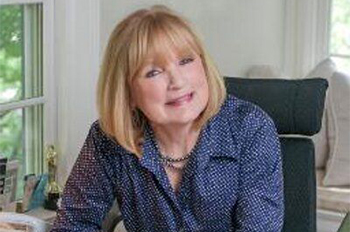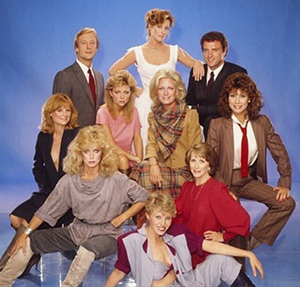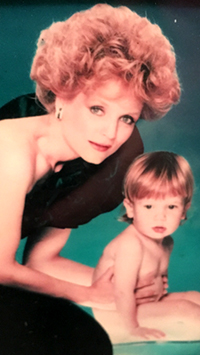
Constance McCashin worked diligently to achieve her goal of becoming an actress, and she succeeded. But she didn’t realize many of the skills she worked so hard to acquire would prepare her very well for the second act in her life.
Why Acting?
McCashin, MSW, was a dancer in high school and college, an English major who wanted to be an actress. She graduated and went to New York City to work different jobs, including waitressing and teaching, while she also honed her acting skills.
“I did a lot of commercials and studied with amazing teachers,” she said. After eight years, she moved to California. On the West Coast, McCashin did some TV movies and guest appearances, and in 1978 married film director Sam Weisman, who with an offhand remark provided her with a role that made her famous.
Knots Landing

David Jacobs, the man who created the TV show “Dallas,” was planning a pilot program for another show, and he walked into the casting office where McCashin’s husband was working.
McCashin said Jacobs was looking for someone to play a catty second wife on the show, and her husband told him, “my wife would be perfect.”
She landed the role of Laura Avery Sumner on “Knots Landing,” the evening show that PBS named “the longest-running primetime soap of all.” McCashin played the character from the show’s debut in 1979 until 1987, when her character, Laura, died of a brain tumor that was the main story line for that episode—the show’s 200th episode.
Lessons Learned
McCashin said she learned both personal and professional lessons. In acting, “you are taught to be very observant, to read other people,” she said. “You leave yourself behind. You have to let what you know inform the session. That’s great training for a therapist.”
Now, she has many clients who are in the arts and she believes the artist mechanism is something not everyone understands. Personally, she learned that show business can be “a crappy business,” because some of the people have a killer instinct. Yet she said she was able to work with some wonderful actors like Ava Gardner and Julie Harris.
“When you spend all day with a group of actors, you form a community,” McCashin said. “I was lucky.”
Why Social Work?
McCashin moved back to the East Coast to return to school and a friend there said, “You should become a social worker. You can do so many things.”
“That’s why I went to social work school,” she said. “It seemed like the right fit.”
McCashin worked at a counseling center at Brandeis University in Waltham, Mass., and the woman who ran the eating disorder treatment area at that time worked alone because no others were interested in that area, McCashin said. “The boss put us together, and she trained me. Since I had worked in the entertainment area, it was a good fit. I saw a lot of students in that area, and their bodies were being scrutinized more than most.”
In her private practice now, McCashin has numerous clients who are musicians and actors “and a few athletes, a gymnast, a professional ice skater and a lot of kids who are writers, some who are in high school.” Her clients range in age from 11 to 68, and many have eating disorders.
“I think part of the reason I have so many people in the arts is maybe I understand them better,” she said. “The creative arena is a very cruel environment. Everyone is disposable.”
Similarities Between Social Work and Acting

McCashin said dysmorphic disorder is something she has seen in both areas, and it’s equally distributed among men and women.
She was a dancer and a performer, and said “I understand firsthand how damaging it can be to be scrutinized on a regular basis for your physical self. You can be considered too tall, too short, too thin or too fat. They judge you the moment you walk in the room.”
Actresses make very good audience members, and as a therapist, for that 45-minute session, “I’m the best audience you could hope for,” she said. “I appreciate their narrative; I appreciate their story.”
“When kids ask me how I can remember (their stories), I say because it’s really interesting to me. I also make them laugh a lot, especially the kids. I really am interested, and they know it — especially when you’re on (a computer) screen now and they can see your face close up. They know if you’re not interested.”
With the pandemic moving sessions to the virtual platform, McCashin said she is incorporating a more performative process on camera.
What’s Next?
“I have no idea what’s next,” McCashin said. “I love my clients. I have amazing clients and I relish my time with my young clients. They share their writing with me. They send me pictures when they graduate. I am very lucky because I don’t have anything else I want to do.”